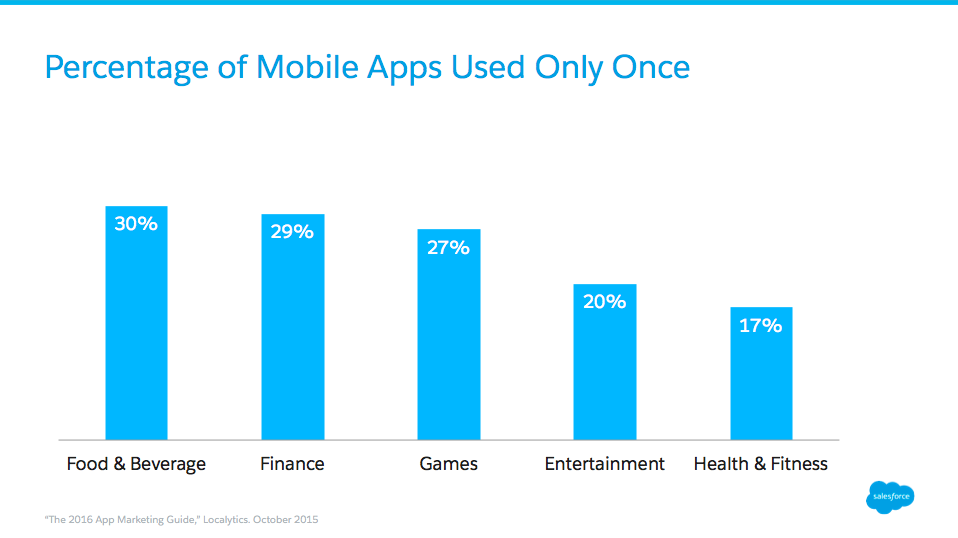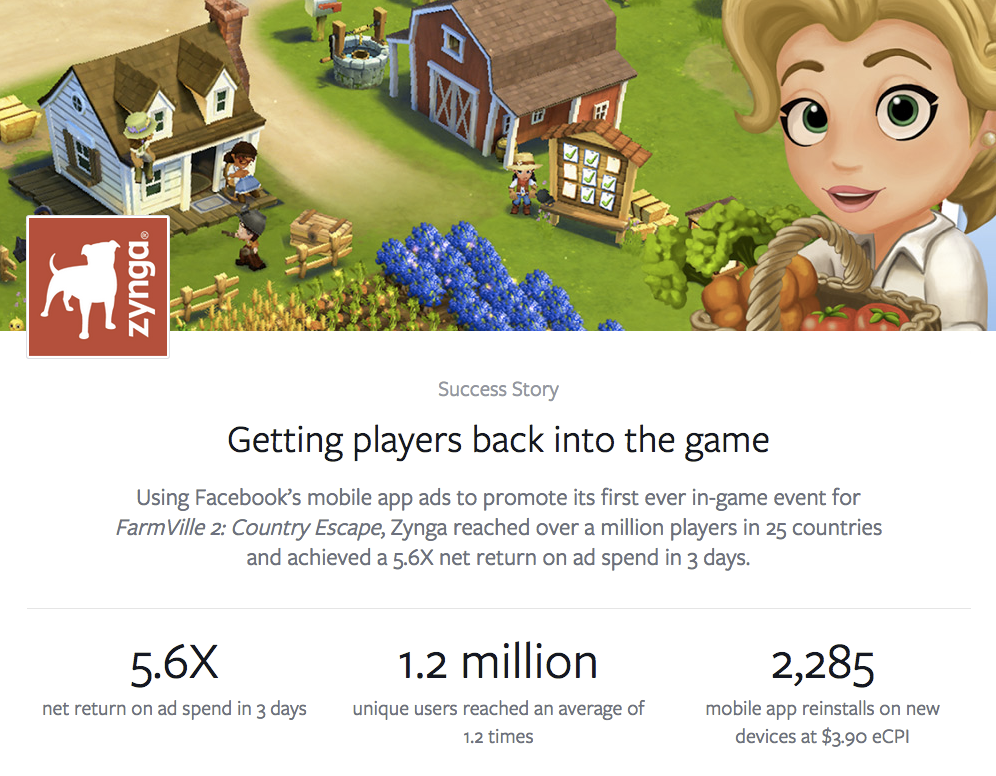
Get your FREE 30-day trial.
Please complete all fields.
There are a lot of mobile apps out there. Craving fast food? There’s an app for that. Want to stream movies on your smartphone? There’s an app for that. Want to measure your sleep quality? Yes, there’s even an app for that! With so much competition in the market, getting your audience to install your app is tough. Then, getting your audience to use your mobile app after the initial install is even harder. Data from Localytics shows the percentage of apps used only once broken out by industry.

However, acquiring mobile customers and continuing to engage them after the initial install is much easier when using deep links and segmenting your app audience to create a cohesive customer journey.
Deep link ads take people to a customized location within the app rather than just opening the home screen on the app when they click on the ad. By directing users to a specific area of your app directly from the ad, users don’t have to search for the content that was promoted in the ad and are more likely to engage with content in your app. Deep links can be used for both mobile app install ads and mobile app engagement ads.
On Facebook and Instagram, you can create audiences from in-app activity by choosing from one of 14 pre-defined app events or create a custom event. For example, these events could trigger when a user opens your app, makes a purchase, or achieves a certain level in your game. They give you better understanding of your mobile audience, allow you to create personalized ads based on how your audience uses the app, and enable you to more accurately measure the performance of your campaigns per your objectives. Learn how TripIt optimizing towards in-app activity and measures ad value beyond the initial app install.
Using deep link ads to engage your audience leads to better app monetization and higher retention rates. Implementing in-app events as part of your advertising strategy gives you the opportunity to guide customers down the marketing funnel on a customized journey based on their engagement with your app. Deep links seamlessly align offers of the ad to the same offer in the app, creating a fluid customer experience that makes it as easy as possible for the user to use your app and claim the offer.
For example, Zynga used Facebook mobile app ads to reach users in 25 countries who had not played the game in a while or may have deleted the app, FarmVille 2: Country Escape. Zynga first segmented its users into paying and non-paying players, and then advertised its first in-app event: an offer for 10% off in-app purchases for one day only. The first in-app message a player saw when clicking the ad to open the app matched the creative of the Facebook ad, resulting in 5.6x net return on ad spend (ROI) in just three days, along with over 2,285 app installs from users who had previously deleted the app, but decided to install once again to claim this enticing in-app offer.

No, the Twitter App Card also allows for deep linking to your mobile app much in the same way that Facebook and Instagram ads work! Should the Twitter user not have the app installed already, a link to the appropriate app store will be displayed within the Twitter App Card. According to Twitter’s Q2 2015 earning report, 80% of its monthly active users access the platform via a mobile device. Being a mobile dominate platform, Twitter presents a huge opportunity to garner a large volume of downloads for your mobile apps at low costs.